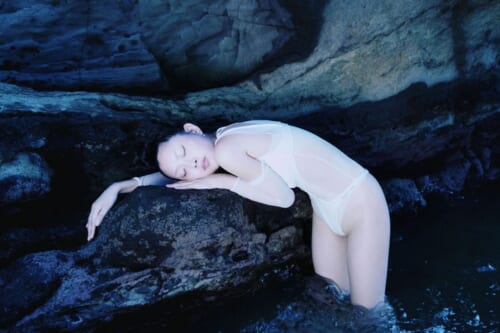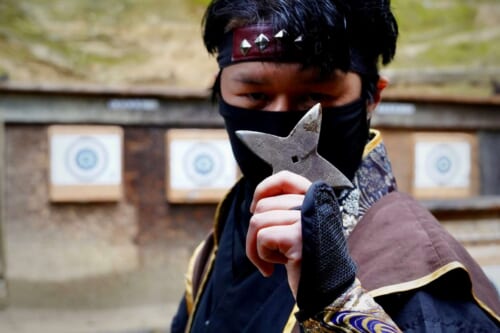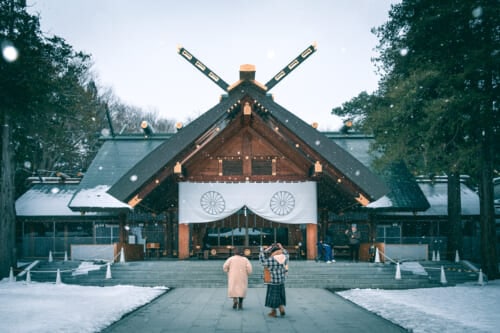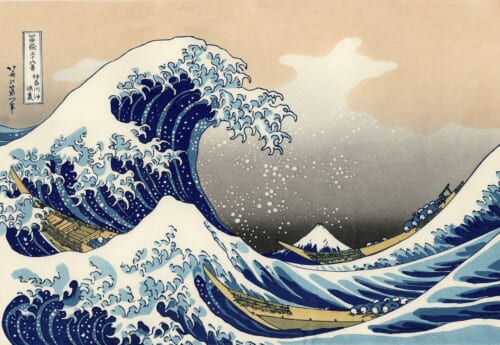In Japan, names hold deep cultural and linguistic significance. For many Japanese parents, choosing the perfect first name is more than just a decision, it’s a way to express their hopes, dreams, and aspirations for their child. Traditionally, Japanese names are written in kanji, each character carrying a unique meaning that reflects virtues, personality traits, or even wishes for the child’s future. This poetic and symbolic naming tradition has been an integral part of Japanese culture for centuries. However, in recent years, a growing number of younger Japanese parents have started to break away from these conventions, embracing modern and international influences in baby names.
How To Choose A First Name In Japanese
Parents have two options when choosing a first name. The first is to choose a harmonious tone before choosing the relevant kanji to match the pronunciation. The same pronunciation can often be written several ways in kanji, and there are sometimes a great number of possible combinations. The only constraint is to choose from a list of 2136 official kanji, called joyo kanji 常用漢字 or commonly-used kanji, composed by Japan’s Ministry of Education. Parents can also refer to the jinmeiyo kanji 人名用漢字, a list authorized by the Ministry of Justice.
The association of the particular kanji is left to the parent’s creativity, but the meaning is often symbolic as the kanji used is an interpretation of the first name.
Another option is to choose one of the approved kanji and arrive at a harmoniously-sounding tone. Kanji evoking qualities such as intelligence, beauty, sho 翔 (strength), 律 ritsu (honesty and decency), along with positive concepts such as yo 陽 (sun or energy), are particularly popular. Amongst those that are approved, you can find several kanji evoking ideals and values such as the desire to start something new 新 (shin), the heart 心 (kokoro), love 愛 (ai), or harmony 和 (wa). There is also an array of kanji depicting the natural world, such as seasons, trees, flowers, fruits, and vegetables or animals such as birds.
Things To Remember When Choosing A First Name In Japanese
Most of the first names in Japanese are made up of two kanji, but a few consist of just one and others with three. Japanese law states that parents should choose “easy, common kanji,” but everything is open to interpretation.
The number of traits depicted in kanji is crucial because it is important to have a good balance of concepts between the first name and the family name. The reality is that there aren’t many traits that are necessarily harmful but it’s all about creating the right character.
Above all, the association between the first and second names should be coherent, and the entire name must sound right in spoken and written Japanese without any negative connotations. Note that people only have two names in Japan, unlike other countries where a person might have multiple middle names. It should also be pointed out that, in formal situations, the first name comes after the family name.
In summary, there are several parameters to work with when parents are selecting a name for their child; they must pay attention to the meaning and the reading of the kanji; it must have the appropriate number of desired traits and be complex enough when written, whilst also being chosen from the most commonly-used combinations! It’s important to choose carefully to prevent a child from being mocked by their peers or having a name that is too complex to write.
Writing And Pronunciation of Japanese First Names
From kanji, it is not possible to guess the pronunciation of a first name. Therefore, furigana (small kana written above kanji characters) is often required to give the pronunciation. Similarly, it is also not possible to guess the name from the tones of the kanji, which explains the importance of meishi (名刺) in Japanese society. Meishi is a business card, often given out upon first meeting someone, and contains the name of the person written appropriately.
A person is not obliged to write their first name in kanji, and certain first names are often written in hiragana (for older names) or in katakana (when the name originates from abroad). This practice is regarded as modern and not viewed very favourably by society. A first name can also be composed of a mixture of kanji and hiragana, but this is quite rare.
New Japanese First Names: Kira Kira
In recent years, some parents have veered away from the traditional process of selecting a name for their child. In the 1990s, the “Kira Kira name” キラキラネーム, kira kira nemu) phenomena appeared. Literally translated, it means “sparkly names” and refers to unique names, which often stem from popular culture. This phenomenon continued to become more popular throughout the 2010s.
“Kira Kira” names feature a lot in the Japanese press and are somewhat of a hot topic in debates. Whilst the names can be fashionable, naming your child in this way can also be considered problematic as the names are often difficult to carry for that individual. These names can be belittled and mocked by the conservative Japanese society which favours uniformity and tradition. That being said, some people feel that “Kira Kira” names break from the norm and express a certain creativity.
The younger generation is leaning more towards original first names, perhaps with a Western, often Anglicised, tone. Many of these foreign-sounding words can be linked to the kanji but with a free interpretation, meaning and reading. For example, the kanji 心, ‘heart’ can also be pronounced ハート, Haato. You can also choose two kanjis and associate the pronunciation with them without any link to their meaning.
“Kira Kira” first names are largely inspired by popular culture and the entertainment industry, taking inspiration from manga, anime, cinema and video games.
Some names pay tribute to historical figures and, even though their names are written in hiragana without a link to kanji, it’s down to the parents to come up with kanji corresponding to the reading of the name. Sometimes, the kanji’s reading is fixed to the “kira kira” name, and the meaning has nothing to do with the corresponding kanji. These are called ateji (当て字).
Another sign that times have changed: In the past, the start of a new era gave rise to a boom in kanji from that particular time period. But after the start of the Reiwa (令和) era in 2019, research has found that no new kanji following this style was registered. Names featuring the kanji 和, wa, (meaning harmony) are far from making it into the top 10.
The Most Common First Names For Boys In Japanese
At the top of the list of the most-used masculine names in Japan in 2024, are those relating to the natural world: Haruto or Hanato 陽翔 (a ray of shining sunlight), Minato or Sou 湊 (gateway and sign of being open to other cultures), Riku 陸 (land), Haruki 晴輝 (clear weather, brightness), Hinata 日向 (a sunny place), Souta 颯太 (suddenly, smoothly), Aoi, Aoto, Ao or Sora 蒼 (blue, a kanji associated with luxury), Yuito 結翔 (to connect), Asahi 朝陽 (dawn).
In terms of “traditional” first names, these include Isao 勲 (virtue), Kazuo 一雄 (first-born), Ken ou Kenji 健治 (to be in good health, often used for the youngest child), Yori 頼 (worthy of trust), Hiro 広 (big), Akira 明 (very intelligent), and Akemi 暁美 (natural beauty).
Amongst the “kira kira” names, the winner is 男, the kanji for man, phonetically – and freely – written as アダム, Adamu (Adam). The mixed first name 紅葉, whose kanji means “autumn leaves”, is associated with the more restrictive reading: めいぷる, Meipuru, or maple in English, meaning maple tree.
The Most Common First Names For Girls In Japanese
At the top of the list of the most-used feminine first names in 2014 in Japan is Rin 凛 (dignified), Tsumugi 紬, wool or silk), followed by Himari, Hinata or Hiyori 陽葵 (sunflower), Yua, Yuina, Yume or Yuna (結愛, love connections), An, Anzu or Anna (杏, apricot), Tsumugi (紬, wool or silk), Riko (莉子, small jasmine, perfumed flower), Yuzuki or Yuuki (結月, connected to the moon, often used to mean that they want to build connections with others), Mei (芽依, bud and trust, a sign of wishing to have many experiences), Mitsuki or Mizuki (美月, beautiful moon) and Koharu (心春, the heart of spring, a soft heart that’s full of floral beauty).
In terms of “traditional” first names, these include Ayame 菖蒲 (iris flower), Emi 恵美 (divine beauty), Kohana 子花 (small flower), Koto 琴 (harp), Midori 緑 (green), Mieko 美恵子 (a beautiful, blessed child), Miki (美紀 or 美樹, beauty), Nami (波, wave), Rina (里菜, green village), and Yoko (代子, child of the generation).
The leading group of “Kira Kira” feminine first names centres around 心姫, whose kanji means “princess at heart” and is read as “kokorohime” which does not match up with the common meaning of that kanji.
In the name of modernity, a young generation of parents has set their creativity free in the way that their children’s names are pronounced and written in kanji. As with many words in Japanese, the influx of foreign first names has also impacted the formulating of kanji.
Translated by Mark Webster
Cover photo: Patrick Reynolds










No Comments yet!